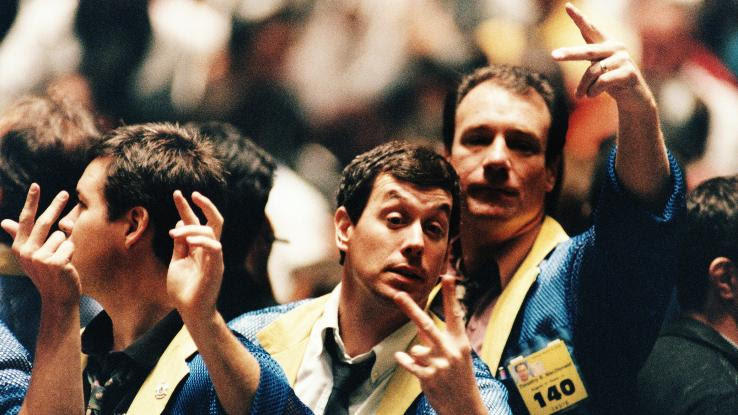Usda Rural Housing Single Family Housing Guaranteed Loan

It doesn't take long before offset investors are striking with market lingo like "market cost per share" and "book cost per share." But what do these terms really hateful, how are they different, and why should you care? Join the states as we break down the meanings of both, tell you how to determine them, and how they tin be useful information for you as an investor to keep in mind.

Simply put, a stock's market price per share is the price that appears whenever you lot click on its ticker. If the stock is experiencing a day of heavy volume, the market price per share may literally change by the second as the price fluctuates upwardly and down.
That's considering the market cost per share is all about supply and need. In essence, it's the cost that the stock is trading for at whatsoever given moment. The more than people who are interested in buying the stock, the more than its going rate will climb. When there are more investors interested in selling their shares than there are those interested in ownership them, the price volition go down.
Several things can crusade a certain visitor'south stock toll to move including:
- Things similar a great earnings written report, a hot new product, a recently canonical drug, or a promising new CEO tin can cause more interest in the visitor. Equally more investors buy shares, the stock market's cost per share tin can become upwardly.
- Likewise, bad news can cause a stock'southward market cost per share to nosedive. An unflattering earnings report, a scandal, or a simple lack of interest in the visitor's products or services can cause sellers to attempt to unload their shares en masse, which drives the price downward.
- When it comes to meme stocks or mean solar day trading "stocks in play," a stock's market place toll per share may experience large price fluctuations simply due to volume alone. In these instances, company fundamentals don't tend to matter then much, every bit the stock price moves simply because a big number of people are trading it at in one case.
How Is Market Cost Per Share Adamant?

As we mentioned higher up, the market price per share is all about supply and demand, which is ultimately what causes it to move either upwards or downward. When you lot're trading on a web-based platform, it's like shooting fish in a barrel to forget that y'all're actually more or less participating in an online auction for shares of different companies.
On one side, some people own the shares only are willing to sell them for the right price. That price is chosen the "inquire." On the other, some sellers are looking to buy the shares. The buyers place "bids" on the shares, which is basically a style of saying they'll buy them for a certain price and not a penny more.
The market price per share is the magical moment when a buyer'due south bid price and a seller'due south enquire toll marshal and a sale is generated. As with any other production, when there's more demand than supplies, prices will be college. When there's more supply than need, prices will be cheaper.
How to Use Market place Price Per Share to Calculate Market Cap

Want to know the value of a visitor you're because investing in? Y'all tin use the current market toll per share to calculate something called a visitor's market capitalization or "market cap." This will tell you what the company'south overall value is on the stock market and its perceived value equally far as investors are concerned.
A company'south market place price per share refers to the total value of all of the company'southward outstanding shares put together. Outstanding shares are the shares that the company has authorized to be traded on the stock market and which are held by investors. Outstanding shares are opposed to treasury shares, which are shares however held by the company itself.
To calculate a company'due south market place cap, just multiply the electric current market cost per share by the number of total shares outstanding. This will tell you how much the company is ultimately worth on the market.
Marketplace Price Per Share Example

Using a company'due south market cost per share to determine its market place cap will permit yous to understand the size of one company as compared to others, too as its value on the market at big. For instance, permit's say that Company A had a market price per share of $10, while Visitor B's were currently selling for $5. You might initially assume that Company A had the college market cap, right? Not so fast!
Say, upon further test that you discovered that Company A had a total of x million outstanding shares. You could calculate their marketplace cap similar and so:
$x x 10 million = a full market cap of $100,000,000
Not too shabby. But let'south say that you so discovered that Company B had a total of 100 million outstanding shares and used the same formula.
$5 10 100,000,000 = a total market cap of $500,000,000
Ultimately, in the market'south eyes, Company B is actually the more valuable of the two.
Market Price Per Share Vs Volume Value Per Share

Market cost per share is sometimes compared to a company's book value per share, but what is the difference? While the marketplace toll per share reflects the current price that shares are selling for, volume value per share takes a company'due south net worth into account.
To determine book value per share you lot would start with the company's total assets and so subtract their liabilities. Liabilities can include things like debt, overhead, and supplies, etc. The departure betwixt the two reflects what the company is actually worth.
Say, for instance, that Company C's total assets were $100 million, just they were too $forty million in debt. So their cyberspace value would be $sixty million. Once you get in at that figure, you'd dissever it by the number of Company C'south shares outstanding. Let's say in this case that they had 10 1000000 outstanding shares. So:
$sixty,000,000/ 10 meg= a volume value per share of $6
Why does this thing? Because comparing a company'south book value per share to their current market value per share tin can be a great way to notice growth opportunities. For case, if company C was currently trading at a market price per share of $2.00, it could be a sign that the visitor is undervalued and that the current price is a good buy. On the other hand, if Company C's shares were currently trading for $12 per share, you might be a bit more wary because they could be overvalued and destined to correct.
Source: https://www.askmoney.com/investing/calculate-market-price-per-share?utm_content=params%3Ao%3D1465803%26ad%3DdirN%26qo%3DserpIndex
Post a Comment for "Usda Rural Housing Single Family Housing Guaranteed Loan"